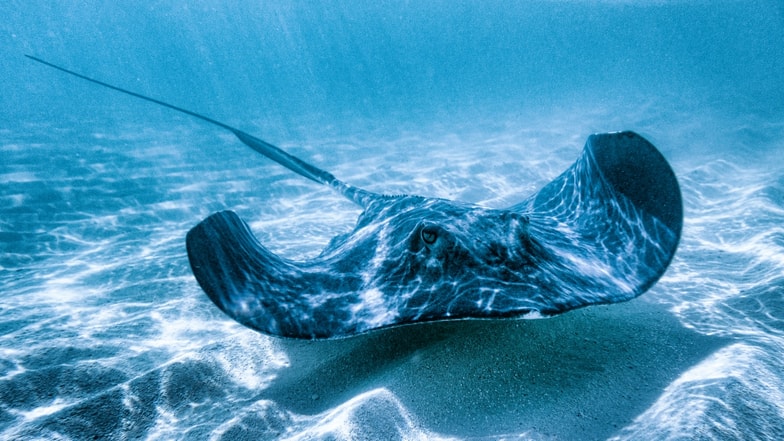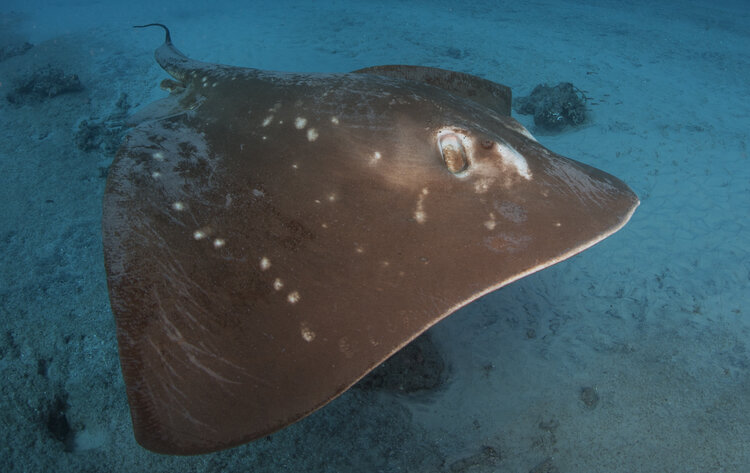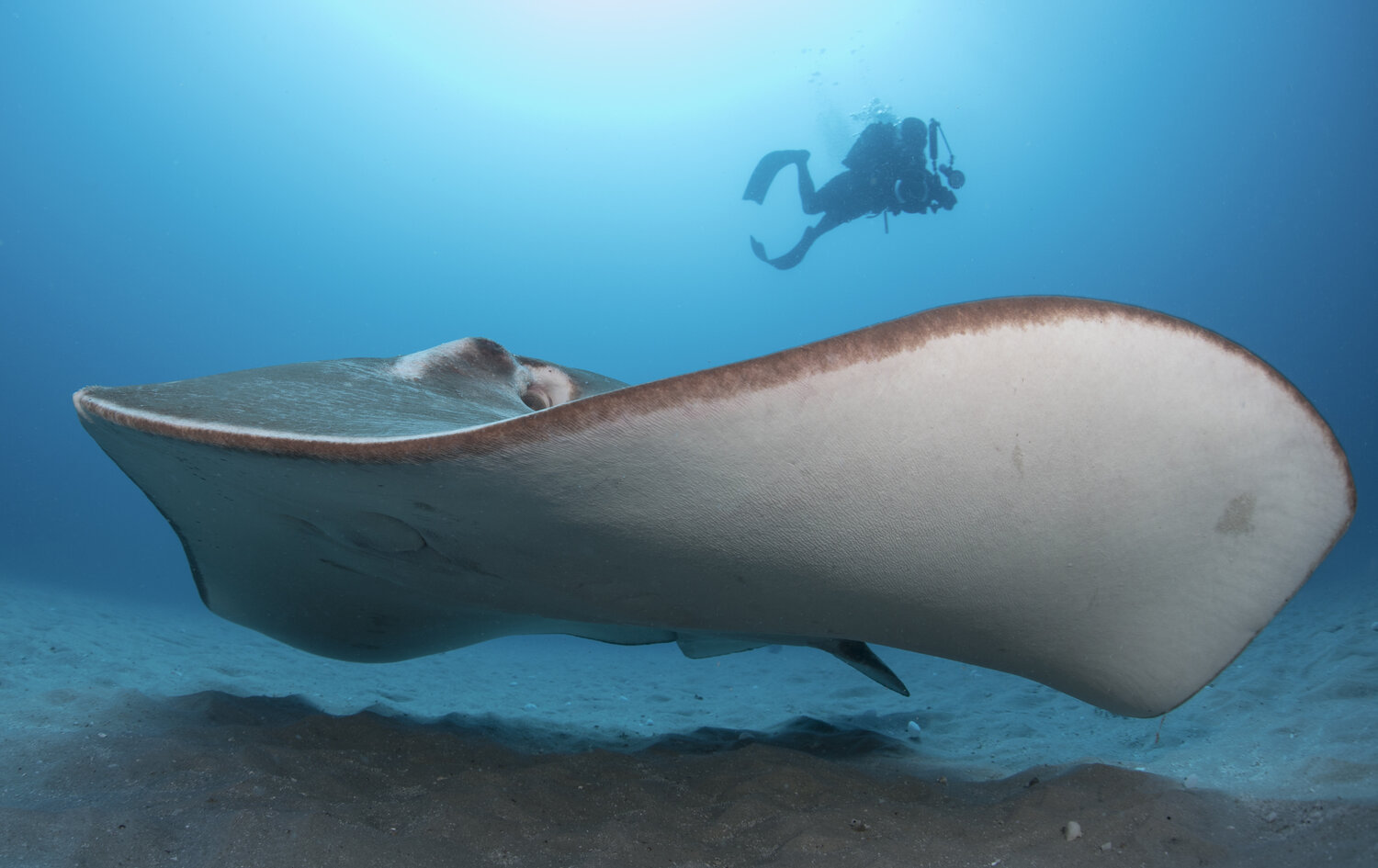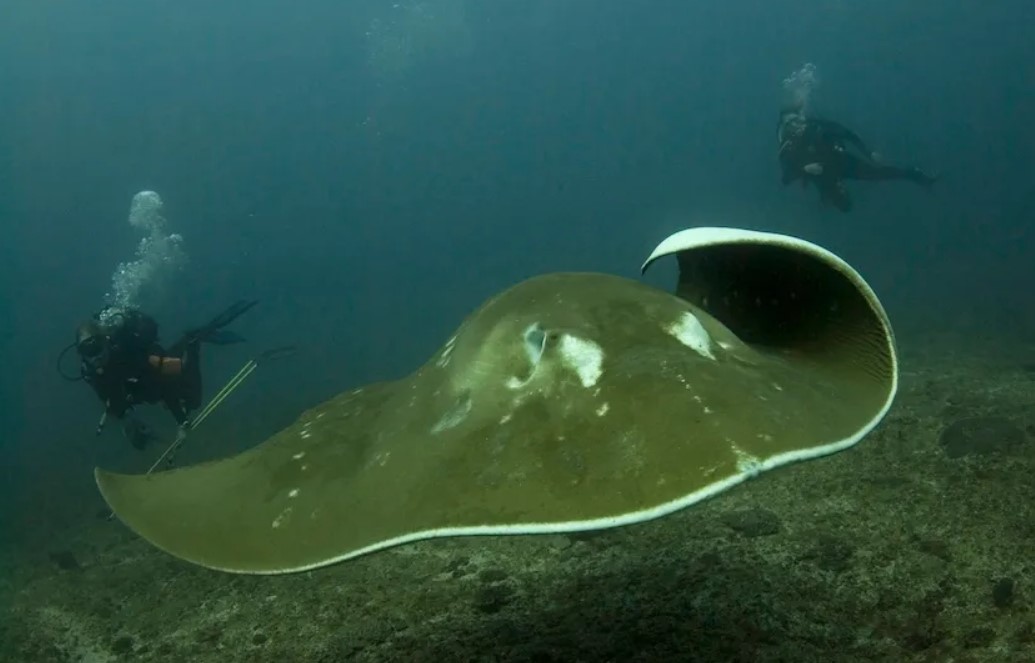Tag Along on an Adventure with Gigantic Smalleye Stingrays
For the first time ever, scientists in Mozambique have tagged wild smalleye stingrays, the world’s largest and rarest marine stingray. These Pacific Ocean fish can grow up to 10 feet long and are so rarely seen that they are likely a critically endangered species. They also have a stinger that’s as big as a human forearm!

Photo Credit: Per Breiehagan
How did they manage to do it?
After weeks of scouting out the coast off the Bazaruto Archipelago in Mozambique, National Geographic Explorer and ray expert Andrea Marshall finally spotted a smalleye in shallow water. She dove in, armed with a six-foot-long pole, and gently took a skin sample from its underside. The fish initially remained calm, which was a good sign, as any sudden movements would’ve put them in mortal danger.

This was risky business.
Following that first successful experiment, Marshall and her team spent months locating more smalleyes, which tend to congregate along a particular stretch of the Mozambican coast. While no harm came to anyone on the team, one of their first discoveries about the smalleye stingray was that it can reach their stingers up and over their body like a scorpion.
While smalleye stingrays are not naturally aggressive towards humans, they follow a “poke and be poked” philosophy. They don’t have good eyesight thanks to their unusually small eyes that they are named after. So it is no surprise that they go on the defense when provoked! The tagging process was risky but the team managed to attach acoustic and satellite tags to 11 individual smalleyes.
Meet the smalleye stingray.
Preliminary data suggests that the smalleye stingray is an incredibly impressive animal, capable of diving over 650 feet deep and swimming hundreds of miles in a day. The researchers hope that the tagging data will reveal why the smalleyes are investing so much energy to travel so far.
Because these rays dive much deeper than most other rays, they have poor eyesight. This might explain why researchers discovered they bury themselves in the sand after eating a meal. When their energy is going toward digestion, they don’t want to leave themselves vulnerable in open water without being able to see well.

Photo Credit: Andrea Marshall
Is it a race against time?
The International Union for Conservation of Nature lists smalleye stingrays as data deficient, and Marshall believes they are likely critically endangered. Her goal is to gather enough information that the IUCN can properly assess the species, which would lead to better protections. When a species has such small numbers to start with, it’s hit even harder by threats such as water pollution, overfishing, and the impacts of climate change. Marshall worries it is a race against the clock to learn more about and get more attention for this incredible species that most people aren’t even aware of.

Photo Credit: Andrea Marshall
The tagging program is still in its infancy, and analyzing the data could take years, but it promises to offer interesting insights into the lives of these mysterious creatures. By collecting data on their movements, behavior, and habitats, scientists like Andrea Marshall can help fill in the gaps in our understanding of this elusive species. With this knowledge, we can take steps to better protect the smalleye stingray from threats, and we can marvel at the beauty and diversity of the creatures that call the ocean home.





